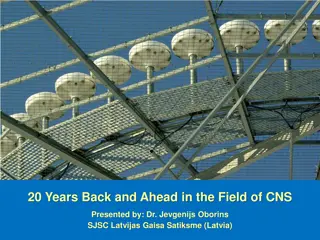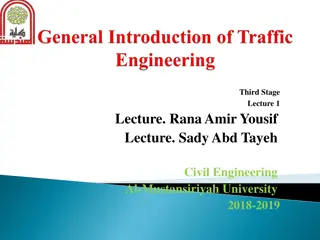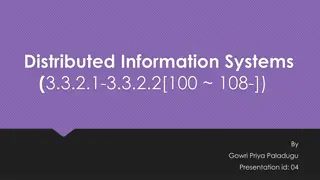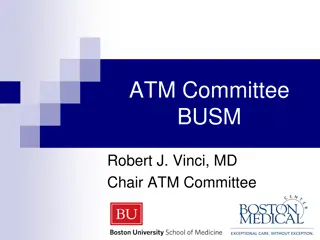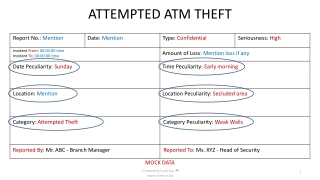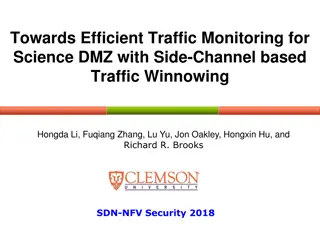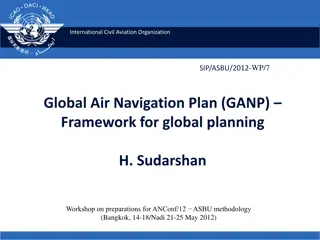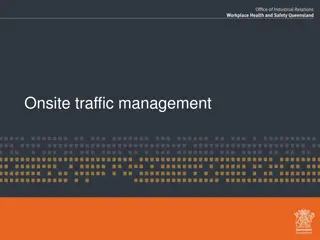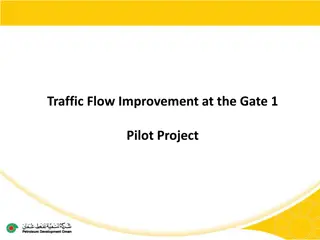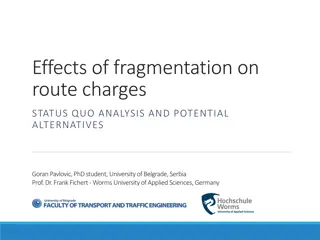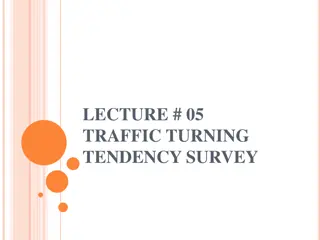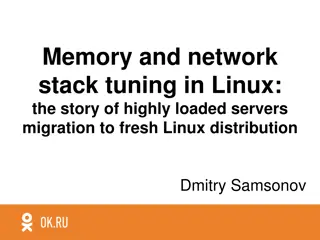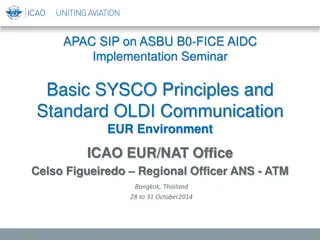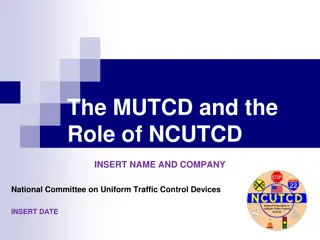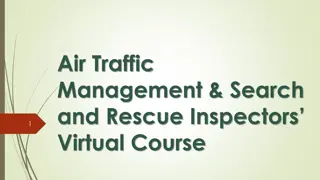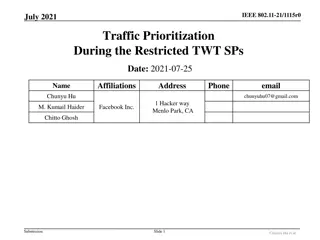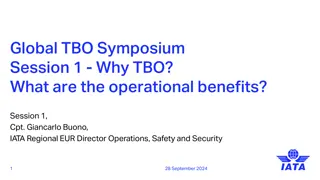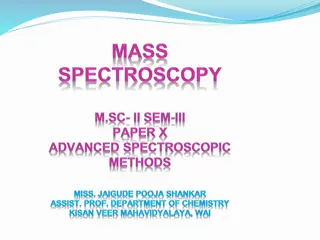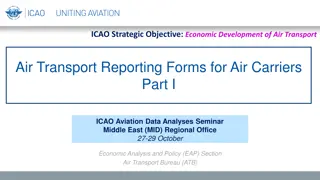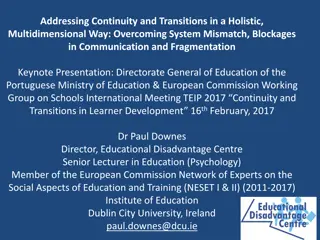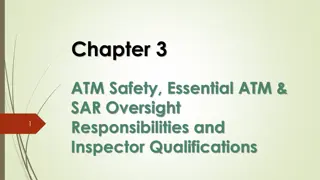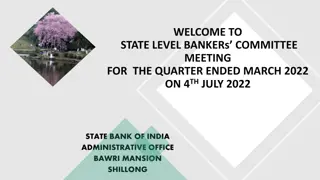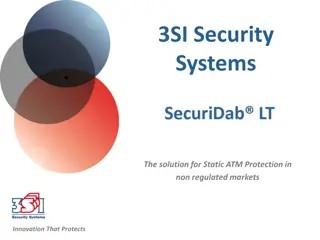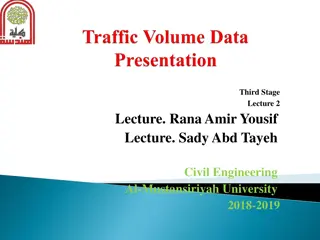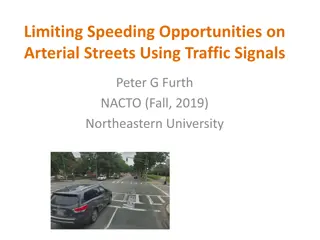Understanding Fragmentation in Air Traffic: Case Studies and Impact on ATM Performance
Fragmentation, defined as being torn apart or crashed into pieces, is explored through case studies on air traffic fragmentation and its impact on ATM performance. The discussion delves into different industries' use of fragmentation, highlighting that it is not necessarily linked with efficiency and optimal levels depend on technology and evolution over time. The workshop in Budapest, Hungary in May 2019, led by Robert Anton, Niels Lokman, Edouard Pitton, and Matthias Whittome, examines various aspects of fragmentation in air traffic as well as ways to measure it using different indicators and coefficients.
Download Presentation

Please find below an Image/Link to download the presentation.
The content on the website is provided AS IS for your information and personal use only. It may not be sold, licensed, or shared on other websites without obtaining consent from the author. Download presentation by click this link. If you encounter any issues during the download, it is possible that the publisher has removed the file from their server.
E N D
Presentation Transcript
Is Fragmentation a sin? Discussion through some case studies Research Workshop on Fragmentation in Air Traffic and ist impact on ATM Performance 14-15.05.2019 Budapest/Hungary Robert Anton, Niels Lokman, Edouard Pitton, Matthias Whittome V0.3
What is Fragmentation? Fragmentation = "torn apart or crashed into pieces" Usage in other industries: Medicine: elimination of substances (e.g. fragmentation of kidney stones) Computer: storage or processor architecture Energy supply market: decentral (e.g. coal) central (e.g. nuclear power) decentral (e.g. solar panels) Fragmentation is not necessarily linked with efficiency. Optimal Level of fragmentation depends on available technology and evolves over time 1 Is Fragmentation a sin?
Fragmentation of Android Devices 2 Is Fragmentation a sin?
Fragmentation in European ATM How to measure Fragmentation? Consider possible indicators Indicator IFR ACC Movements Size of controlled Airspace ATCOs in OPS Total staff Total IFR flights controlled by the ANSP Total IFR km controlled by the ANSP Total flight-hours controlled by the ANSP Number of ACC operational units Gate-to-gate ATM/CNS provision cost (in '000) Minimum 109.184 20.400 Maximum 5.056.957 2.190.000 2.859 7.669 3.051.154 1'647.941.888 2.287.512 Average 1.156.598 368.660 Factor 46,3 107,4 56,1 52,5 27,6 43,3 45,2 Median 662.629 202.000 51 146 504 1.410 903.136 236 808 110.385 38.076.948 50.608 636.982 317.738.640 453.326 200.200.879 268.136 1 5 2 5,0 1 17.926 1.253.962 246.874 70,0 133.489 Key Data of European ANSPs; Source: Eurocontrol/PRU Dashboard, Data from 2016 3 Is Fragmentation a sin?
Normed Gini Coefficient for controlled flight hours 2004 2016 0.62 0.61 0.60 0.59 0.58 0.57 0.56 0.55 0.54 2004 2005 2006 2007 2008 2009 2010 2011 2012 2013 2014 2015 2016 Figure: Evolution of the normed Gini coefficient (G*) for controlled flight hours from 2004 to 2016 The level of fragmentation has decreased in the past 12 years The smaller ANSPs have experienced higher growth rates in flight hours controlled than larger ones A merger of the smallest four ANSPs in 2004 would have led to a similar Gini value in 2016, only achieved by traffic growth 4 Is Fragmentation a sin?
Lorenz Curve for controlled flight hours 2016 as share in % per ANSP Judgment on Fragmentation in European ATM: Which indicator to use to measure? What does the indicator tell? What is the impact of fragmentation on performance? Input by some case studies 100% 90% 80% 70% 60% 50% 40% 30% 20% 10% 0% 0% 10% 20% 30% 40% 50% 60% 70% 80% 90% 100% Figure: Lorenz Curve for controlled flight hours in European ATM in 2016 as a share in % per ANSP Lorenz Curve shows the distribution of the output of controlled flight hours 5 Is Fragmentation a sin?
Case Study DSNA I : the BALSI-Project Switching sectors (upper/lower levels) between Marseille and Geneva ACCs, depending on QFU in service in GVA (--- border FR/CH) The BALSI-Project has led to more fragmentation at interface franco-Suisse, Gen ve-Lyon airports. Innovative approach: dynamic airspace configuration, between 2 ACCs, cross-borders: the Area of Responsibility switches between DSNA and Skyguide, depending on the runway in use at Geneva airport. Innovative flexible airspace Management leading to improvements in safety, capacity, flight time and fuel consumption. 6 Is Fragmentation a sin?
Case Study DSNA II : CDM En-Route CDM = Airports only?.. At DSNA, the CDM process was modified for En-Route: If traffic demand exceeds capacity, DSNA first starts the CDM process contacting airlines and trying to find other routes, flight levels etc. This is a voluntary process helping both stakeholders. Prerequisite: knowledge of local conditions and trust. Deployment: first Reims ACC, then other French ACCs, then SESAR PJ24 Application of the Principle of Subsidiarity in Airspace Management 7 Is Fragmentation a sin?
Case Study: Skyguide Swiss airspace configuration: dense & complex traffic situation, currently organized in 2 local ACCs. The Virtualization Approach: One Sky by One System, with 2 geographical units One Data Centre, with rationalization of IT means Optimized use of operational ATCO availability, irrespective of their geographical location Positive added-value actually demonstrated in the specific Swiss airspace configuration, via a seamless improved operational service linked to scaling effects of rationalized IT means defragmentation at the "technical level" (via a Service Oriented Architecture) Application of the Principle of Centralization in Technology whilst keeping the principle of Subsidiarity in Operations 8 Is Fragmentation a sin?
CASE Study: MUAC City pair east midlands-wroclaw Operational Efficiency depends on multiple factors ..such as Sector Capacity availability, Military Airspace usage, Route Charges, Fuel price, etc. Means to mitigate negative effects of fragmentation: a. Network throughput optimization ..rather than throughput on ATC sector or ACC level b. Improved traffic predictions ..such as Traffic Prediction Improvement Project c. Network centric planning and execution ..such as eNM measures d. Optimized Flexible Use of Airspace 9 Is Fragmentation a sin?
Conclusions Discussions on Fragmentation is rather lead by perceptions than by facts Measure Fragmentation remains unclear so far Based on selected indicator, Level of Fragmentation in Europe has considerably decreased over the last 12 years Impact of Fragmentation on Performance not clear Case Studies give evidence that with Fragmentation, efficiency can be increased, or by means of new technology or new processes the negative effects can be mitigated. 10 Is Fragmentation a sin?


